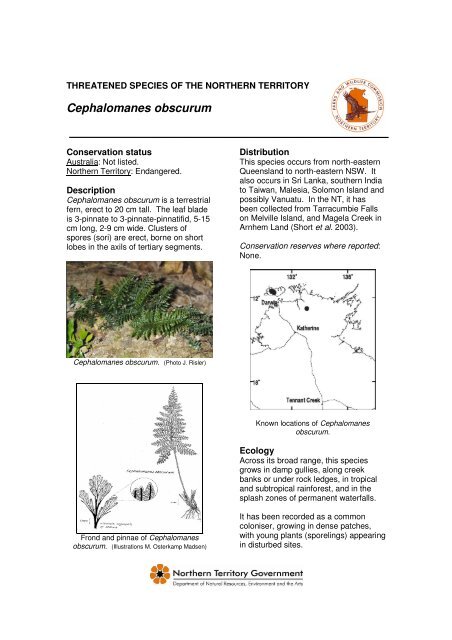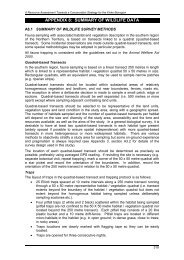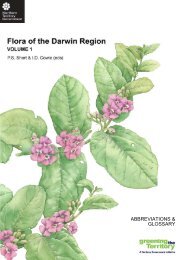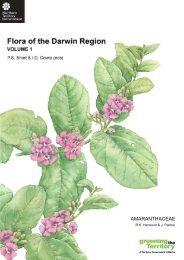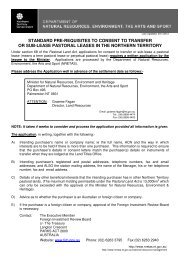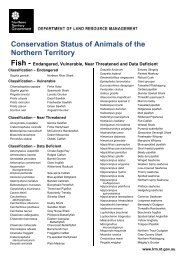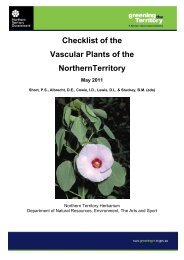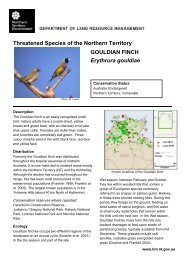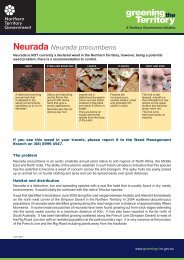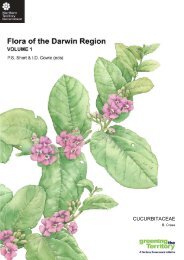Cephalomanes obscurum - Department of Land Resource ...
Cephalomanes obscurum - Department of Land Resource ...
Cephalomanes obscurum - Department of Land Resource ...
You also want an ePaper? Increase the reach of your titles
YUMPU automatically turns print PDFs into web optimized ePapers that Google loves.
THREATENED SPECIES OF THE NORTHERN TERRITORY<br />
<strong>Cephalomanes</strong> <strong>obscurum</strong><br />
Conservation status<br />
Australia: Not listed.<br />
Northern Territory: Endangered.<br />
Description<br />
<strong>Cephalomanes</strong> <strong>obscurum</strong> is a terrestrial<br />
fern, erect to 20 cm tall. The leaf blade<br />
is 3-pinnate to 3-pinnate-pinnatifid, 5-15<br />
cm long, 2-9 cm wide. Clusters <strong>of</strong><br />
spores (sori) are erect, borne on short<br />
lobes in the axils <strong>of</strong> tertiary segments.<br />
<strong>Cephalomanes</strong> <strong>obscurum</strong>. (Photo J. Risler)<br />
Frond and pinnae <strong>of</strong> <strong>Cephalomanes</strong><br />
<strong>obscurum</strong>. (Illustrations M. Osterkamp Madsen)<br />
Distribution<br />
This species occurs from north-eastern<br />
Queensland to north-eastern NSW. It<br />
also occurs in Sri Lanka, southern India<br />
to Taiwan, Malesia, Solomon Island and<br />
possibly Vanuatu. In the NT, it has<br />
been collected from Tarracumbie Falls<br />
on Melville Island, and Magela Creek in<br />
Arnhem <strong>Land</strong> (Short et al. 2003).<br />
Conservation reserves where reported:<br />
None.<br />
Known locations <strong>of</strong> <strong>Cephalomanes</strong><br />
<strong>obscurum</strong>.<br />
Ecology<br />
Across its broad range, this species<br />
grows in damp gullies, along creek<br />
banks or under rock ledges, in tropical<br />
and subtropical rainforest, and in the<br />
splash zones <strong>of</strong> permanent waterfalls.<br />
It has been recorded as a common<br />
coloniser, growing in dense patches,<br />
with young plants (sporelings) appearing<br />
in disturbed sites.
Conservation assessment<br />
This taxon qualifies for Endangered<br />
(under criteria D) based on the number<br />
<strong>of</strong> mature individuals in the total<br />
population estimated to be


